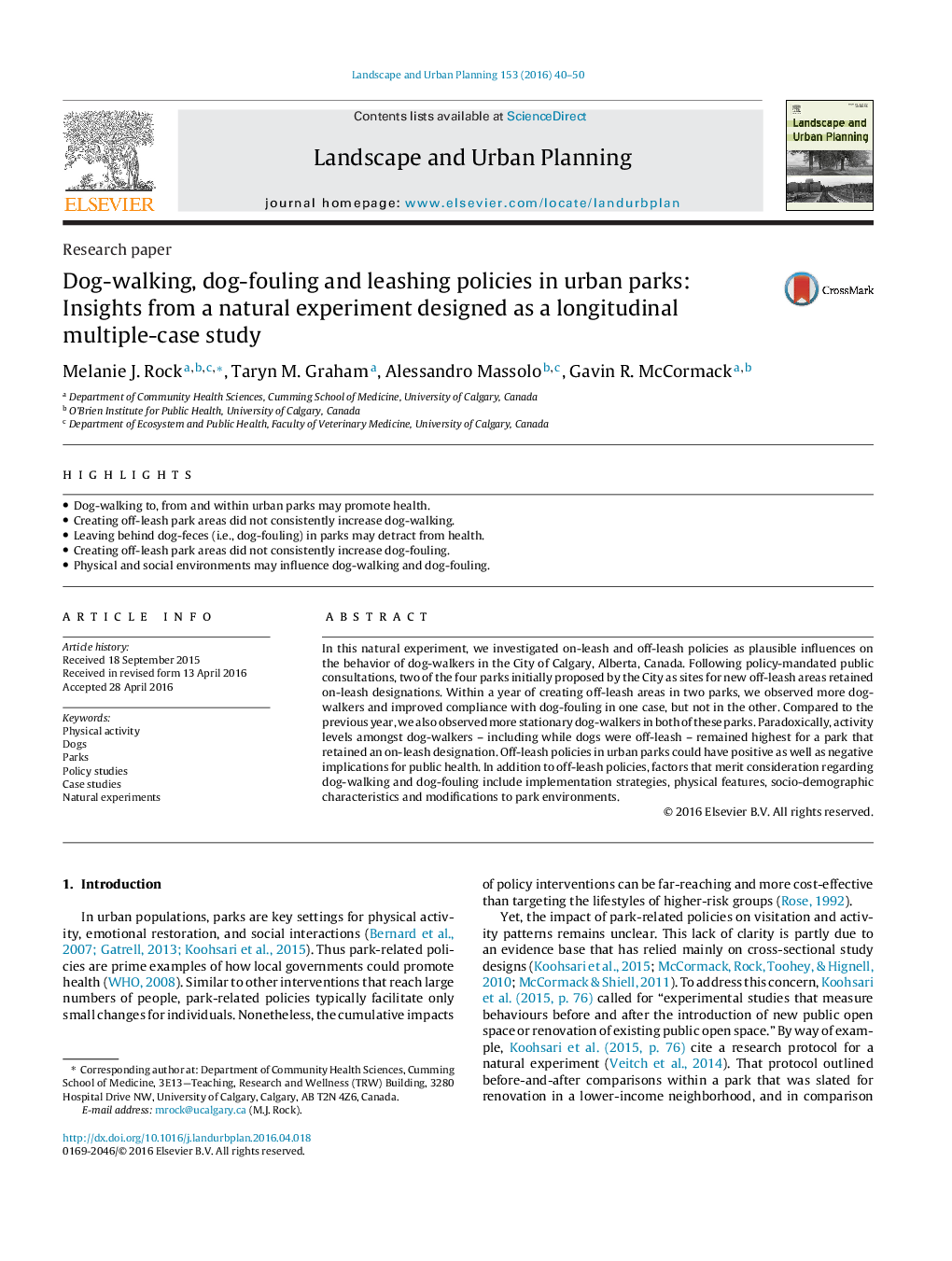| Article ID | Journal | Published Year | Pages | File Type |
|---|---|---|---|---|
| 7460509 | Landscape and Urban Planning | 2016 | 11 Pages |
Abstract
In this natural experiment, we investigated on-leash and off-leash policies as plausible influences on the behavior of dog-walkers in the City of Calgary, Alberta, Canada. Following policy-mandated public consultations, two of the four parks initially proposed by the City as sites for new off-leash areas retained on-leash designations. Within a year of creating off-leash areas in two parks, we observed more dog-walkers and improved compliance with dog-fouling in one case, but not in the other. Compared to the previous year, we also observed more stationary dog-walkers in both of these parks. Paradoxically, activity levels amongst dog-walkers - including while dogs were off-leash - remained highest for a park that retained an on-leash designation. Off-leash policies in urban parks could have positive as well as negative implications for public health. In addition to off-leash policies, factors that merit consideration regarding dog-walking and dog-fouling include implementation strategies, physical features, socio-demographic characteristics and modifications to park environments.
Related Topics
Life Sciences
Agricultural and Biological Sciences
Ecology, Evolution, Behavior and Systematics
Authors
Melanie J. Rock, Taryn M. Graham, Alessandro Massolo, Gavin R. McCormack,
